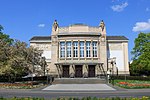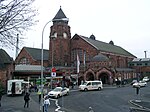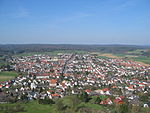University of Giessen
1607 establishments in the Holy Roman EmpireEducational institutions established in the 1600sForestry in GermanyGiessenHistory of forestry education ... and 2 more
Universities and colleges in HesseUniversity of Giessen

University of Giessen, official name Justus Liebig University Giessen (German: Justus-Liebig-Universität Gießen), is a large public research university in Giessen, Hesse, Germany. It is named after its most famous faculty member, Justus von Liebig, the founder of modern agricultural chemistry and inventor of artificial fertiliser. It covers the areas of arts/humanities, business, dentistry, economics, law, medicine, science, social sciences, and veterinary medicine. Its university hospital, which has two sites, Giessen and Marburg (the latter of which is the teaching hospital of the University of Marburg), is the only private university hospital in Germany.
Excerpt from the Wikipedia article University of Giessen (License: CC BY-SA 3.0, Authors, Images).University of Giessen
Ludwigstraße,
Geographical coordinates (GPS) Address Nearby Places Show on map
Geographical coordinates (GPS)
| Latitude | Longitude |
|---|---|
| N 50.580833333333 ° | E 8.6763888888889 ° |
Address
Ludwigstraße 32
35390
Hesse, Germany
Open on Google Maps











